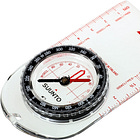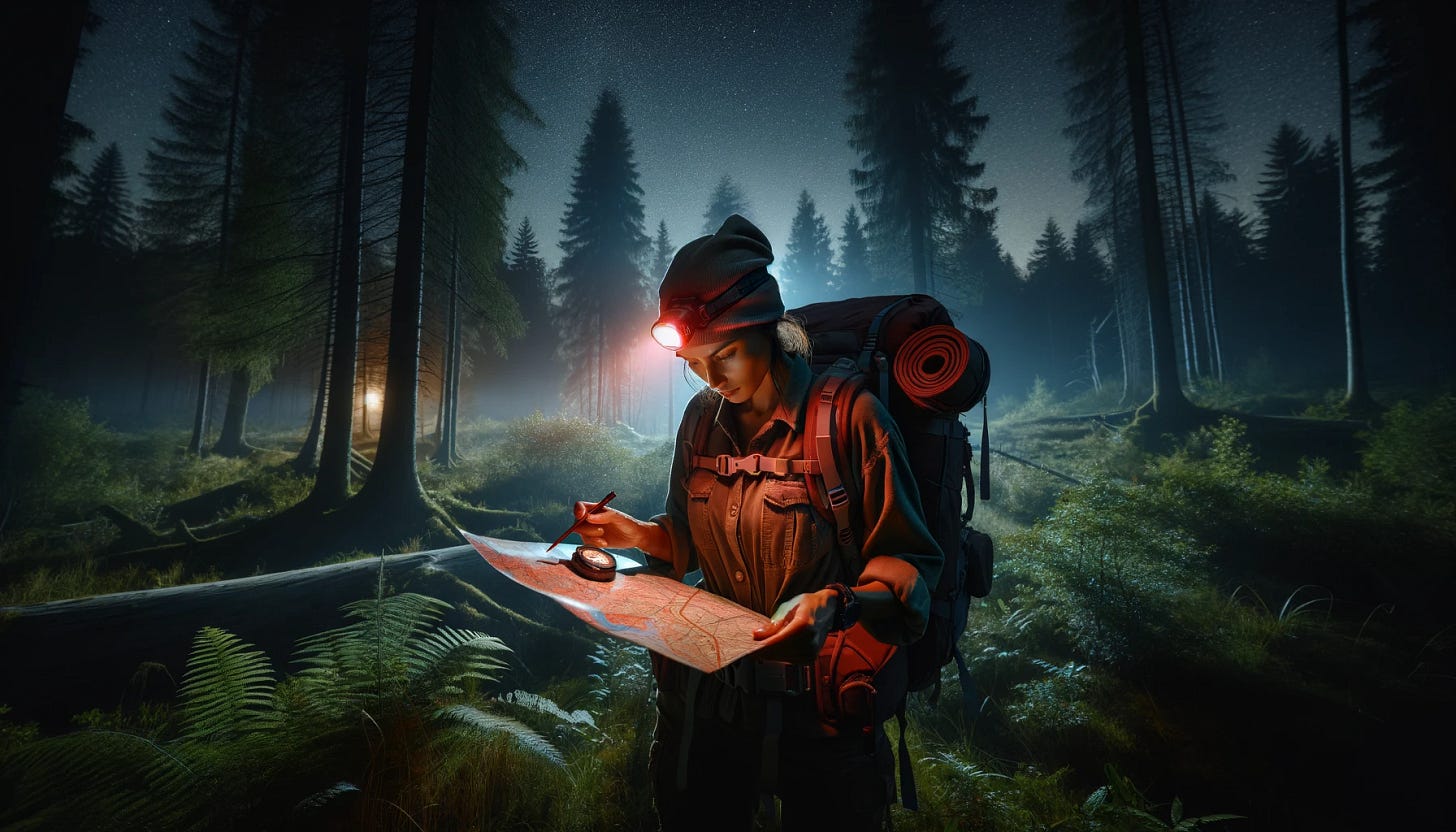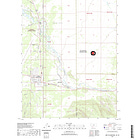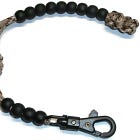Here we go. We are entering the landscape, in the field, performing whatever tasks required to accomplish our mission. Are we ready? Let’s take a step back and make sure we are prepared to move through whatever the terrain and obstacles that await us.
Ambulatory navigation, or the practice of moving through environments on foot with a clear understanding of direction and location, is a core skill for a scout. Unfortunately it’s a lost art, with people relying on trails, trail maps, and gps devices to guide them through the outdoors. Whether for recreational hiking, bushcraft, or in emergency or otherwise austere scenarios, the knowledge and application of sound navigational techniques, especially when we are without electronic devices, can mean the difference between reaching a destination safely or facing potential peril.
In this essential guide, we delve deep into the art and science of preparation, laying the groundwork for successful navigation in any environment. From the dense, whispering forests that seem to shift with every gust of wind, to the stark, open expanses where the horizon stretches into infinity, preparation is your most trusted ally.
Understanding the Environment
Effective navigation begins with a comprehensive understanding of your operational environment, be it urban, wilderness, or a hybrid landscape that intersects with vehicular thoroughfares. Each terrain presents unique challenges and requires specific strategies for successful navigation.
Urban Terrain: Operating in urban environments demands an acute awareness of structural landmarks and the ability to navigate using both conventional maps and digital navigation tools. Urban areas are characterized by their dense infrastructure, including roads, buildings, and underground systems, requiring navigators to be proficient in street navigation and the use of urban orienteering techniques.
Wilderness Terrain: Navigating wilderness areas calls for a different set of skills focused on natural landmark recognition, topographic map reading, and compass skills. The lack of man-made structures increases the reliance on terrain association, celestial navigation, and environmental cues. Understanding the natural landscape and being able to adapt to its challenges, from dense forests to mountainous terrains and water bodies, is crucial for successful wilderness navigation.
Hybrid Landscapes: Hybrid landscapes are those where natural terrains meet man-made environments, such as trails or roads cutting through a forest. Navigating these areas requires a versatile skill set that combines urban and wilderness navigation techniques. The ability to transition seamlessly between using natural landmarks and man-made cues for orientation is essential. Additionally, navigators must be adept at ensuring their safety and visibility when near or crossing vehicular thoroughfares, applying tactical movement principles to avoid detection and maintain operational security if appropriate.
In all environments, a thorough pre-mission reconnaissance and situational awareness are paramount. This includes understanding the environmental conditions, potential hazards, and the tactical advantages and disadvantages of the terrain. Preparing for navigation in any landscape requires not only technical skill but also the ability to anticipate challenges and adapt to changing conditions on the ground.
Essential Navigation Gear
Navigational success hinges on the effective use of a core set of navigational tools. Mastery over these tools enhances operational capability and ensures the safety of personnel in diverse environments.
We’ve covered compasses, maps and GPS devices in this guide:
Headlamps for Night Operations: Headlamps are essential for nocturnal navigation, allowing hands-free operation while maintaining visibility. The selection of headlamps with red-light capability is recommended to preserve night vision and minimize visibility to adversaries during tactical movements.
Reflective Gear: In environments where visibility to vehicular traffic is a concern, reflective gear ensures the safety of personnel by enhancing their visibility. This is especially crucial during dusk, dawn, or nighttime operations, or when navigating near thoroughfares. Tactical considerations dictate the judicious use of reflective gear to balance visibility with operational security.
Proper utilization of these tools requires not only technical proficiency but also an understanding of their limitations and the ability to adapt to dynamic environments. Regular training and practical exercises enhance navigational skills, ensuring preparedness for both routine and complex navigation scenarios.
Mental Preparation
Effective navigation transcends the mere technical mastery of tools and equipment; it requires a robust mental framework, combining strategic foresight with acute self-awareness. The development of mental maps, an understanding of one's physical limitations, and proficient stress management are pivotal to navigating complex environments under varied conditions.
I. Mental Maps
Preparing mental maps before entering wilderness terrain is a proactive approach that significantly enhances navigation and survival skills. This preparation involves researching, visualizing, and mentally rehearsing your journey based on available information and resources. Here's how to effectively prepare mental maps for navigating wilderness terrain:
A. Research and Information Gathering
Study Maps and Guides: Begin by studying detailed topographic maps, satellite images, and trail guides of the area. Pay attention to key features such as rivers, mountain ranges, valleys, and man-made structures.
Understand Terrain Features: Learn to identify and understand different terrain features and how they might appear in the real world. Recognizing ridges, valleys, saddles, and other features on a map can help you visualize the terrain.
Weather and Environmental Conditions: Research the typical weather conditions and environmental challenges of the area. Understanding seasonal changes, prevailing winds, and potential natural hazards (like flash floods or avalanche areas) can influence your mental map.
B. Visualization and Mental Rehearsal
Route Visualization: Mentally walk through your planned route using the map and additional resources. Visualize key waypoints, changes in terrain, and where you might encounter challenges.
Mental Landmarking: Identify distinctive landmarks along your route and visualize them. Consider how they might look from different approaches or times of day.
Scenario Planning: Mentally rehearse different scenarios you might encounter, such as getting lost, facing adverse weather, or encountering wildlife. Plan how you would navigate these situations based on your mental map and the resources at your disposal.
C. Skill Development
Compass and Map Reading: Practice using a compass and reading maps to strengthen your ability to translate two-dimensional information into a three-dimensional mental image of the terrain.
Estimating Distances and Time: Learn to estimate distances on a map and correlate them with actual walking time, considering factors like terrain difficulty and personal pace.
D. Consultation and Learning from Experience
Talk to Experienced Navigators: Speak with individuals who have navigated the area before. Their experiences can provide insights into the terrain, challenges, and tips that might not be evident from maps alone.
Learn from Previous Trips: Reflect on your past navigation experiences. Identify what worked well and what didn't, and use this information to improve your mental mapping skills.
II. Understanding Physical Limits
Acknowledging and understanding one's physical capabilities and limitations is vital for sustained operational effectiveness. This awareness allows for the strategic allocation of physical resources, preventing overexertion and ensuring that personnel maintain optimal performance over extended periods. It's essential for individuals to recognize their endurance thresholds and plan movements that are within their physical capacity, especially in demanding terrains.
III. Stress Management
Navigational tasks, particularly under adverse conditions or when the stakes are high, can induce significant stress. Effective stress management techniques, such as controlled breathing, mental rehearsal, and maintaining a positive outlook, are critical for maintaining cognitive clarity and decision-making capacity. In any context, the ability to manage stress not only contributes to successful navigation but also to overall mission success.
A. Breathing Techniques
Diaphragmatic Breathing: Practice deep breathing exercises that focus on engaging the diaphragm. This type of breathing helps reduce physiological stress responses and promotes calmness. Inhale deeply through the nose, allowing your stomach to expand, hold for a few seconds, and exhale slowly through the mouth.
B. Visualization and Positive Imagery
Mental Rehearsal: Before your trip, visualize yourself successfully navigating the terrain. Imagine overcoming obstacles calmly and efficiently. This mental rehearsal can build confidence and reduce anxiety about potential challenges.
Positive Imagery: When faced with stress, take a moment to visualize a peaceful scene or a past successful navigation experience. This can shift your focus away from immediate stressors and help regain a sense of control.
C. Mindfulness and Meditation
Mindfulness Practice: Develop a habit of mindfulness by focusing on the present moment without judgment. When stress levels rise, consciously bring your attention to your surroundings, the task at hand, or your breath to anchor yourself in the present.
Guided Meditation: Incorporate guided meditation sessions into your preparation routine. These sessions can be focused on stress reduction, relaxation, or mental resilience. Regular practice can improve your ability to remain calm under stress.
D. Progressive Muscle Relaxation (PMR)
PMR Technique: Learn and practice progressive muscle relaxation by tensing and then relaxing different muscle groups in your body. This practice can help reduce physical tension associated with stress and can be especially useful the night before embarking on your navigation.
E. Setting Realistic Goals and Expectations
Manage Expectations: Set realistic goals for your navigation endeavor. Acknowledge that unexpected challenges may arise and that adjustments may be necessary. Reducing the pressure of perfection can alleviate stress.
Break Tasks into Manageable Steps: When faced with a daunting navigation challenge, break it down into smaller, more manageable tasks. Focus on completing one step at a time, which can make the overall situation feel less overwhelming.
F. Social Support and Communication
Stay Connected: Discuss your plans and concerns with a trusted friend or fellow navigator. Sometimes, simply verbalizing your worries can help diminish their power.
Team Support: If navigating in a group, foster a supportive environment where team members can express concerns and work together to manage stress.
G. Reflection and Debriefing
Journaling: Keep a journal to reflect on your navigation experiences, noting instances where you felt stressed and how you managed those feelings. This can be a valuable tool for understanding your stress triggers and improving your coping mechanisms over time.
By integrating these stress management techniques into your navigation preparation and practice, you can build a robust mental toolkit to help you face the challenges of wilderness navigation with confidence and resilience.
We are on the way to operating in the field, no matter what the conditions present. Stay tuned for Part II: Diurnal Navigation Techniques, where we will cover the following topics in detail:
Map Reading and Compass Basics: How to read a map correctly and use a compass for basic orientation.
Landmark Identification: Using natural and man-made landmarks for navigation.
Pacing and Timing: Estimating distances by pacing and understanding travel time.
Safety Measures: Identifying and avoiding hazards during the day.
This article is part of our series below.
The Complete Navigation Field Guide:
Part I:
Part II:
Part III:
Part IV:
Part V:
Coming Soon…
Terrain Analysis
Traversing Along Vehicle Thoroughfares
Steps to Take When Lost











